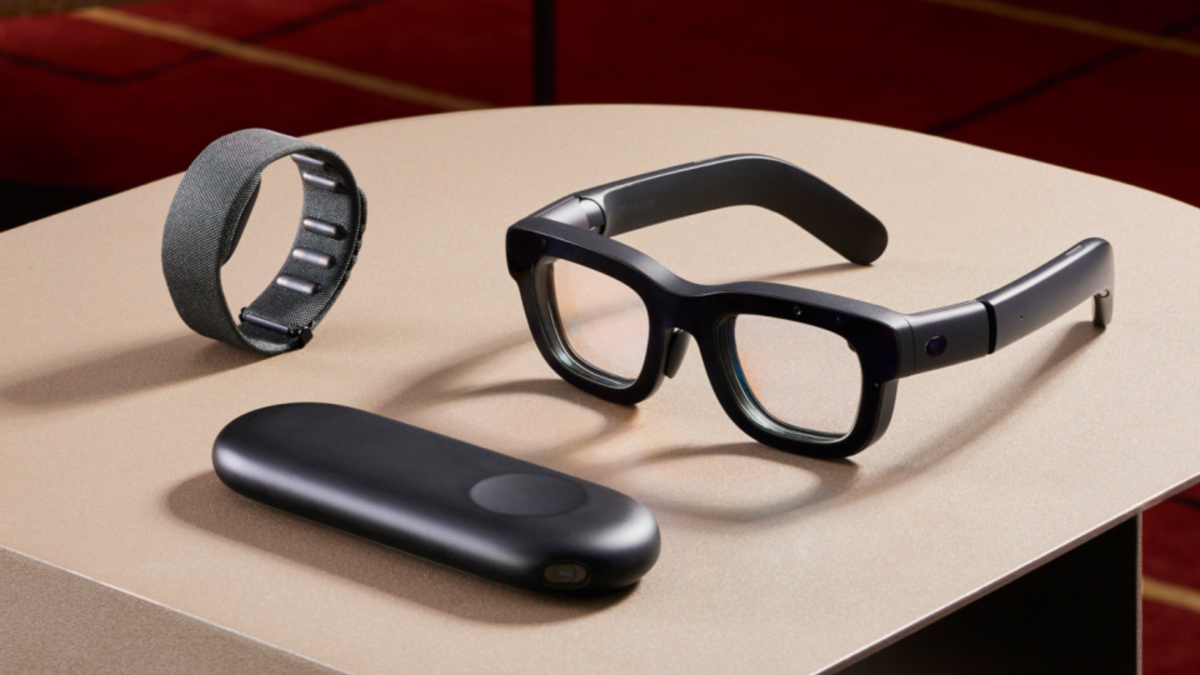
Meta's Project Orion represents a significant advancement in augmented reality (AR) technology, combining innovative hardware and AI capabilities to create a new kind of wearable device. Publicly introduced during the Meta Connect 2024 event, these AR glasses aim to reshape the future of computing by offering a seamless integration of the digital and physical worlds.
Key Features of Orion

Orion glasses are described as Meta's 'first fully functional prototype' and are considered 'the most advanced AR glasses the world has ever seen' by CEO Mark Zuckerberg[6][9]. The glasses utilize state-of-the-art Micro LED projectors that are embedded within the frames, projecting visuals onto high-tech waveguide lenses, allowing users to interact with virtual objects overlaid on their real-world environments without isolating them from their surroundings[9][10]. They weigh less than 100 grams, making them lighter than many current AR headsets while still offering a wide 70-degree field of view[4][9].
The integration of a 'neural interface' allows users to control the glasses through gestures. This wrist-mounted device translates muscle movements into commands, enabling a hands-free experience[4][8][10]. Users can perform actions such as scrolling or selecting items simply by using gestures rather than traditional touch inputs. This concept reflects advances in electromyography technology, making interactions more intuitive.
Development and Future Prospects
The development of Orion has been a long journey for Meta, encompassing over a decade of research and design[3][4]. While the glasses will initially be distributed as developer kits to a select group, including some internal teams at Meta, broader consumer availability remains uncertain. Zuckerberg clarified that Orion is designed not only for demonstration but also as a platform for developers to build applications that enhance the AR experience[6][9][10].
Despite the promise of Orion, Meta has acknowledged that the product is not yet ready for mass production. The complexity and cost of production appear to be significant barriers. For instance, reports indicate that building a single prototype of Orion costs around $10,000, with challenges primarily rooted in manufacturing the custom silicon carbide lenses[7][9]. This economic reality led Meta to opt for a phased approach towards commercial availability, focusing on refining the technology and ensuring that future consumer versions meet market expectations in terms of aesthetics, functionality, and price[6][10].
Comparisons and Competition
/cdn.vox-cdn.com/uploads/chorus_asset/file/25637083/247284_Project_Orion_VPavic_0101.jpg)
In comparison to other AR devices, Orion stands out for its robust feature set and user-friendly interface. For example, while Snap's Spectacles have aimed to incorporate AR elements, they have also been limited in their capabilities and application scope. Meta's glasses are built to meet a broader range of needs, such as connecting users with digital information while keeping them engaged with their immediate surroundings[3][5]. Additionally, Orion's large field of view and advanced display technology create immersive experiences that are not just passive but interactive[4][9].
User Experience and Testing

Initial hands-on experiences with Orion have been described as overwhelmingly positive, with testers highlighting the technology's immersive nature and intuitive interactions. The ability to see virtual objects projected within the real world has been noted as a revolutionary step forward for AR technology. Users reported enjoying activities such as playing AR games and conducting video calls through the interface[5][8][10].
Orion is positioned to serve various purposes, from personal communication to gaming and productivity applications, bringing together multiple digital experiences while maintaining connections to the physical environment[9][10]. The combination of visual overlays with AI support enhances usability, allowing information to be displayed contextually based on what users are viewing[2][4].
Conclusion
Project Orion encapsulates a pivotal advancement in the realm of AR technology, promising to deliver experiences that blend seamlessly into users' daily lives while pushing the boundaries of what is possible with wearable tech. Although the prototype phase presents challenges, the potential for future iterations remains vast, as Meta aims to refine the product and eventually make it accessible to mainstream consumers. With commitments to quality, affordability, and aesthetic appeal, Orion could herald a new era of computing that replaces smartphones with wearable technology that keeps users connected to both the digital and physical worlds.
Get more accurate answers with Super Pandi, upload files, personalized discovery feed, save searches and contribute to the PandiPedia.
Let's look at alternatives:
- Modify the query.
- Start a new thread.
- Remove sources (if manually added).